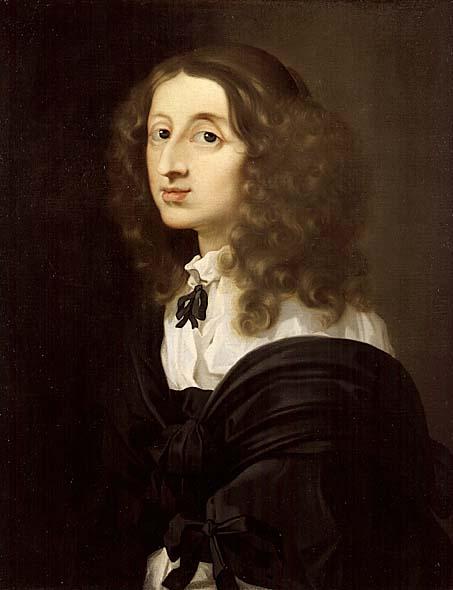Abdication of Queen Christina of Sweden
Christina abdicated her throne on June 6th, 1654.

Christina of Sweden had a blazing vitality, intelligence and wit that made her the wonder of Europe. Her father was Gustavus II Adolphus, the colossus who bestrode the North, and he had her reared like a boy. She was five when his death in battle made her ‘by the Grace of God, Queen of the Swedes, Goths and Vandals’, and the little girl’s council of regency soon realised that they had a human dynamo on their hands. Admitted to council meetings from the age of fourteen and crowned at eighteen, she started each day at five sharp in the morning, took an active part in politics and diplomacy and surrounded herself with eminent foreign scholars, musicians and writers, including the philosopher René Descartes, though she did not greatly take to him. Her abdication at the age of twenty-seven stunned everyone and she went on to move to Rome and annoy the Pope, angle unsuccessfully for the throne of Poland, collect paintings and act as a munificent patron of music and the arts, support Scarlatti and Corelli and Giovanni Bernini, found the Academia dell’ Arcadia for literature and philosophy, and write her autobiography before dying in her Roman palace in 1689 at the age of sixty-two.
Christina never married and had no children. A crack shot and as tough as a plank, she loved riding and hunting, swore like a trooper, enjoyed dirty jokes and despised things feminine. In 1651 when she first announced her intention to abdicate in favour of her cousin and heir, Charles Gustavus, she gave out that a man was needed to rule the country and lead the army, that she desperately needed a rest and that there were other reasons she would not go into. One of them turned out to be that she was determined not to marry, which her leading subjects did not consider an adequate excuse. What she did not reveal, as they brought pressure on her to remain on the throne, was that she had been secretly converted to Roman Catholicism, which in Lutheran Sweden was banned.
The matter swayed this way and that for three years, but gradually the inevitable was reluctantly accepted. The tricky question of Christina’s financial position had to be settled and for the first time in her life she made efforts to economise and live within her means. Eventually, in May 1654 the Swedish diet, the Riksdag, reluctantly gave the abdication its assent. Charles Gustavus made his state entry into Uppsala a few days later, greeted by Christina on horseback with her pistols at her saddlebow.
Christina later wrote that in making Charles Gustavus king she felt like God creating the first man. The abdication ceremony took place in the great hall of Uppsala Castle, with Christina in her crown and her coronation mantle over a white dress. The Queen’s declaration formally relieving her subjects of their oath of obedience to her was read out and her royal regalia of sword and key, orb and sceptre were set on a table, but no one would come forward to remove her crown from her head and after a pause she herself took it off. Two chamberlains removed her mantle and she descended from her silver throne and made an eloquent speech thanking God who had made her queen and all who had served her, which reduced many in the audience to tears. She then urged Charles Gustavus to seat himself on the vacant throne, which he courteously declined to do, and the two left the hall side by side. Christina did not attend the ceremony in the cathedral, where Charles Gustavus was crowned Charles X, but she was present at the coronation banquet in the castle that night. Next day she went to Stockholm and from there, wearing men’s clothes and with only a few attendants, set out on the road to Rome.




